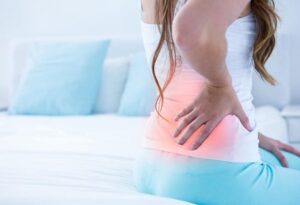Low back pain to this day remains one of the most prevalent and difficult to manage conditions that many adults encounter in their lifetime. It is estimated that the lifetime prevalence of low back pain in the general adult population is 70-80%. For doctors and other clinicians it is one the most difficult conditions to diagnose and treat because it is important to rule out any rare but serious conditions that cause low back pain. However, the majority of low back pain has a musculoskeletal origin that can be acute or chronic. This can also be difficult to assess and treat because of the many treatments available to the public with or without the help of a medical professional.
Lets discuss some common ways to help low back pain that does not have an underlying serious cause.
Visit your physician
It is important to emphasize that getting a professional medical opinion is always going to be recommended above all else. Severe cases of low back pain can’t always be fixed by lifestyle changes. If your lower back pain interferes with your ability to perform everyday activities, talk to your doctor. At Physicians Urgent Care, we have a state of the art Sports Medicine program with a Specialized Sports Medicine Physician. Dr. Jason Williams can diagnose and treat lower back pain so that you can get back to living your life pain-free.
Movement and stretching
Standing, sitting, or lying down in one place for an extended amount of time isn’t healthy for your back. Based on many of the recommended clinical practice guidelines for acute and chronic low back pain, one of the best ways to treat this condition is movement. Movement can just be stretches, exercises, or directed physical therapy. Regular exercise keeps your back muscles fit and flexible and reduces your risk of back-related injuries and pain. Relieve the strain of the day whenever you can by getting up, walking around, and doing some simple stretches. This will help improve circulation to your back. It can also ease any strains or aches that occur due to inactivity. There is strong evidence that yoga can have a short-term effect on treating lower back pain. Yoga also promotes stress relief, which can help reduce tension you may commonly hold in your lower back.
Change the way you sleep
Your sleeping position can put a lot of pressure on your spine, which leads to unwanted back pain. If you are a back sleeper, try sleeping with a pillow under your knees to relieve the pressure on your back as your sleep. The best sleeping position for lower back pain, however, is the fetal position. Sleeping on your side with your knees drawn up close to your chest and placing a pillow or two between your legs can help reduce stress on your lower back. Sleeping on a too soft mattress can also cause lower back pain. A firmer mattress is best.
Work on your posture
Bad posture puts strain and stress on your back and can change the architecture of your spine. Avoid rounding your shoulders, slouching, or bending sideways. If you work an office job, make sure you splurge on a quality office chair that provides firm support for your lower back, and make sure your knees are a little higher than your hips when you sit.
Hot and cold therapy
You can use both ice and heat to your advantage when you experience lower back pain. However, order is important here. When faced with a new injury, first you ice it, then use heat. While heat may be tempting to apply after an injury, it can cause your body to release even more inflammatory compounds into your body. After one to two days and for chronic pain, you can begin to apply heat.
Stop smoking
Smokers are also more likely to experience back pain than nonsmokers. One reason for this is that nicotine restricts blood flow to the disks in the spine. This can cause them to dry out, crack, or rupture. Smoking also reduces the amount of oxygen in the blood, which causes a reduction in nourishment to the muscles and tendons in the back. An unhealthy, weak back is more vulnerable to accidental strains and pulls that cause back pain.
Overview
Back pain can cause a major decrease in your quality of life. If natural remedies aren’t working, make sure to visit a doctor so you can get professional treatment. Our sports medicine program can help you diagnose and treat your pain. We have onsite X-Rays, Joint Injections and a sports medicine physician that will help you recover in no time. Learn more here.